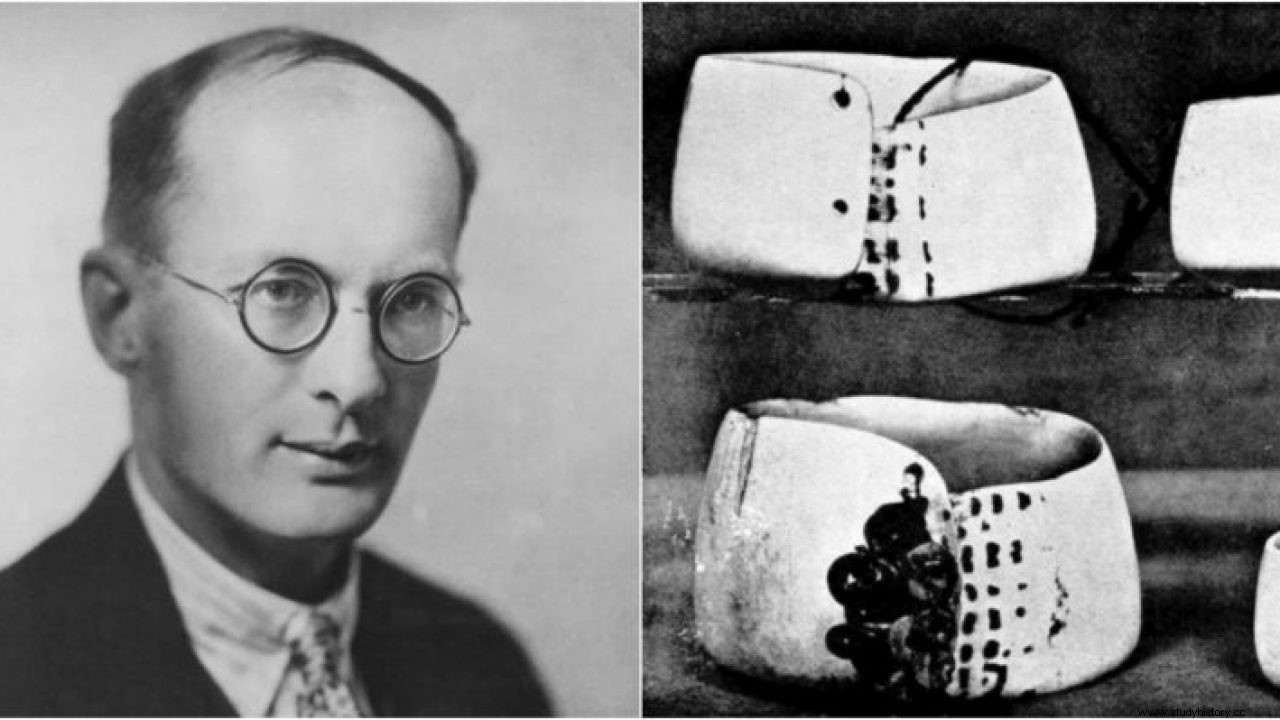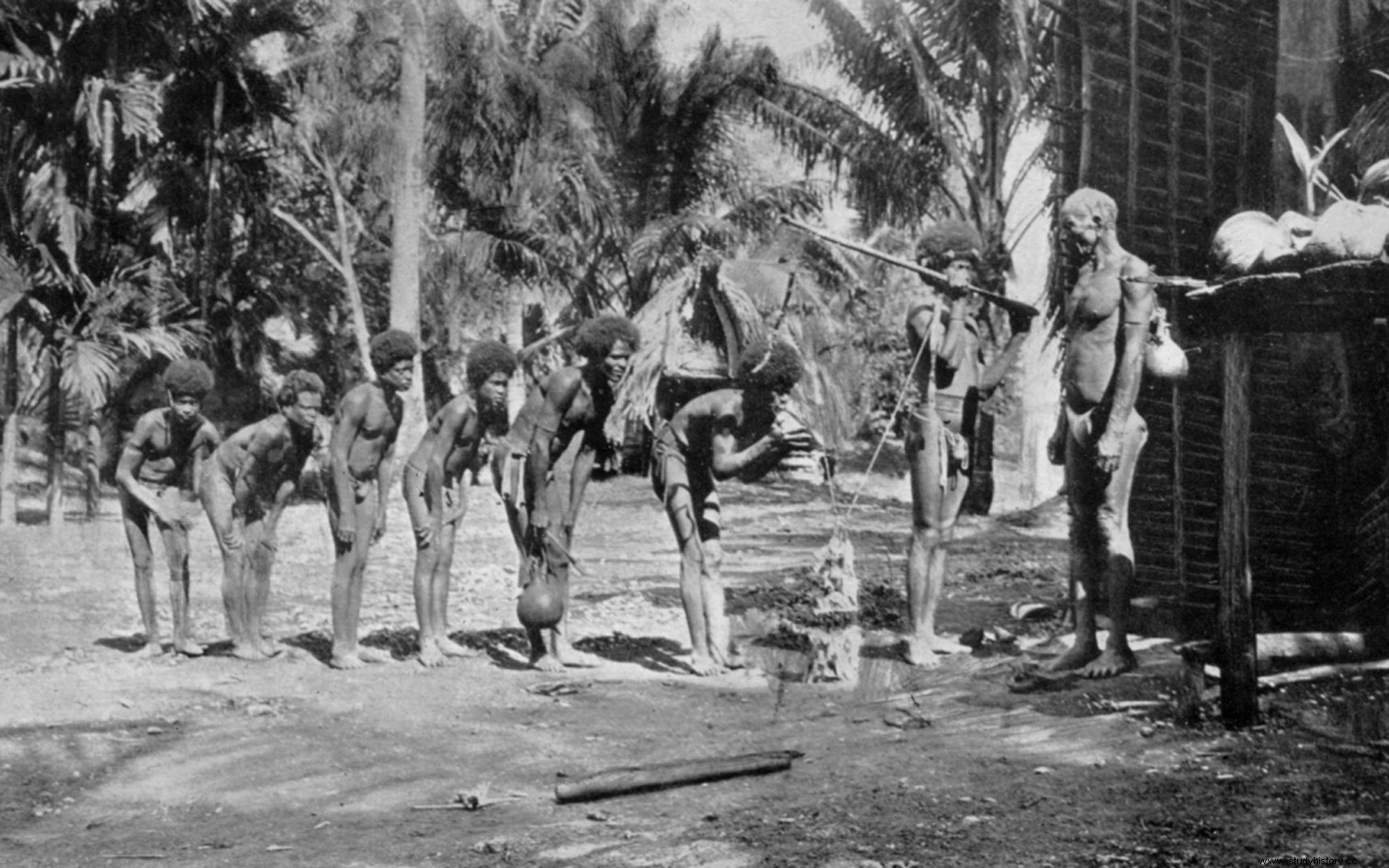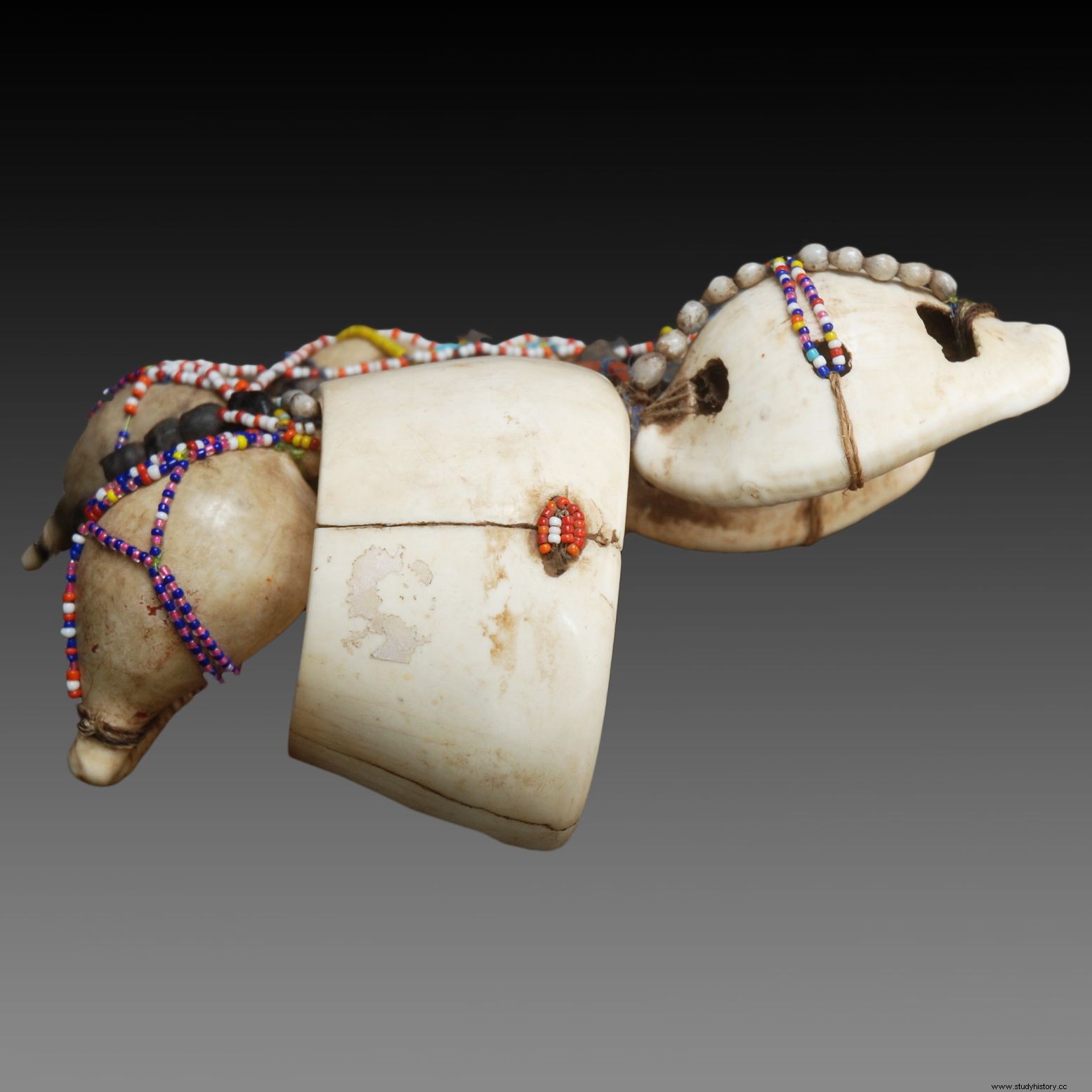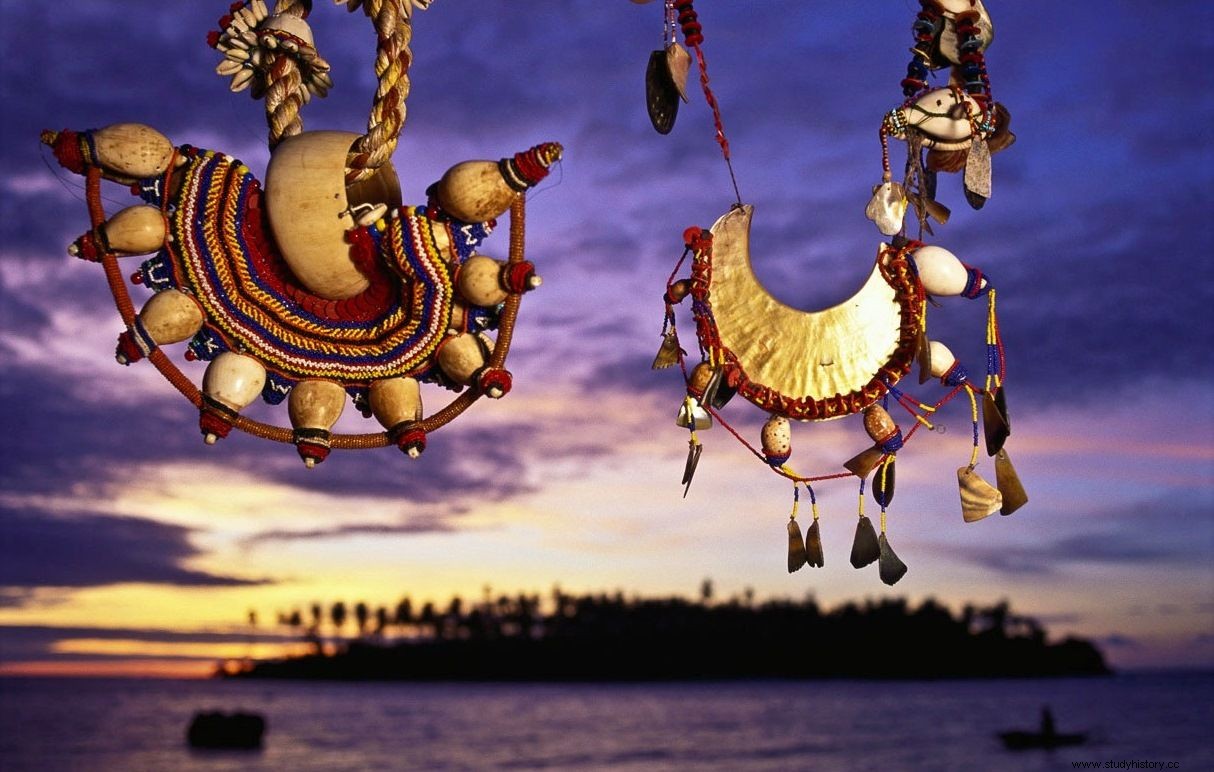Kula is a ceremonial exchange system performed in Milne Bay province in Papua New Guinea. Kula is also known as the Kula Stock Exchange or the Kula Ring. The Kula ring was popularized by the father of modern anthropology, Bronisław Malinowski, in 1922. Malinowski, who first described Kuku in the West, used this test case to argue for the universality of rational decision-making that is present even among 'natives. He further argued about the cultural nature of the subject of their efforts, and reciprocity is one of the fundamental areas of his work.

Image Source:The Vintage News
In his groundbreaking work, Argonauts of the Western Pacific (1922), Malinowski directly confronted the question:"Why would men risk their lives and limbs to travel across vast expanses of dangerous seas to give away what appear to be worthless ornaments? " The anthropologist traced the network of exchanges of bracelets and necklaces across the Trobriand Islands. And they stated that the Kula ring was part of an exchange system, an exchange system linked to political authority.
Details of the study
Malinowski's study, however, became the subject of debate with the French anthropologist Marcel Mauss, the author of The Gift (1925). Marcel Mauss produced some important observations in the gift. The contribution of both anthropologists is still important in anthropology today. The Kula ring has become central in the continuing anthropological debate about the nature and primitive law and order of gift giving, and the existence of gift economies since then.
The items exchanged in Kula are not particularly valuable in themselves. In fact, they served to help create social connections that depend on a person on various occasions throughout life. The study of this practice has helped anthropologists and other social scientists to understand that many indigenous peoples have traditions that serve many purposes that are beyond basic survival functions. This fundamentalism has also made it possible for sometimes distant social groups to have harmonious relationships that benefit all members of their social groups.
A basic description
The ceremonial practice of the Kula ring spans 18 island communities in the Massim archipelago. This includes the Trobriand Islands and involves thousands of individuals living in the area. Participants sometimes travel hundreds of miles by canoe to exchange Kula valuables, which mostly consist of:
- Red shell disc necklaces (known as veigun or soulava) traded to the north (circle the ring clockwise) and;
- White shell bracelets (known as mwali) are traded in a southerly direction (circles counterclockwise).
The closing gift must be a necklace if the opening gift is a bracelet and vice versa. Exchange of Kula valuables is sometimes accompanied by trade in other items, also known as gimwali (or barter). The conditions for participation may vary from region to region. In the Trobriand Islands, the exchange is monopolized by the chiefs. On Dobu Island, between 100 and 150 people are involved in the Kula trade, of which between one and two in each matrilineal lineage.

Image Source:The Secret of Civilization
Meaning
The word Kula is derived from bita kuli, which means "to form in the likeness or image of another" and "to be formed as a likeness or image of the other." This is the "reciprocity" Malinowski wrote about. Muyuw said a good Kula relationship should be "like a marriage."
According to Muyum, "It is a movement, an action to give and take between people - two people (partners) to begin with. This action results in the growth of participants."
Kula's gift
There are two types of Kula gifts, and they are not particularly valuable in themselves. As mentioned above, the first consists of a shell-disc chain (veigun or Soulava) and the second is a shell bracelet (Mwali). The white shell bracelets or Mwali are given with the right hand, while the red shell disc chains or Soulava are given with the left hand. It is exchanged first between villages, then from island to island. Trade in these gifts is solely to strengthen mutual trust, secure trade and improve one's social status and prestige.
The bracelets are used with a ring of shells cut from a giant cone auger. They should traditionally travel in pairs, but Mwali today is relatively smaller in size and travels as a singular. These Mwali or bracelets are embroidered with colored trade beads, egg cowries and sometimes even nuts. They are carried with a rope since they are too small to use. The shell is first fished from the sea and then cooked.
Soulava chains are made of spondylus shells. There are two types of these depending on the part of New Guinea and the color used. It is mostly red around the Normandy island, and further north on Trobriands Island it is mostly available in white with only a little red. The quality of Soulava lies in its richness, color, texture, cut and polished shells.
Kula Ringer
There are nine levels of grading or value for the Kula rings. The grade shows the importance of the person who owns the Kula ring. The highest grade in Mwali is yoiya. It is considered dangerous since the owner must have a content of character and status that can maintain spiritual elements comparable to the value of the object. It is considered unfortunate to have a Kula item that is above one's level of prestige.
Many of the Kula objects carry memories of death, magic and poisoning. Each object is unique, so a person may decide to try to acquire certain ones. Each shell is said to have a unique history and history. The Kula objects are extremely difficult to obtain, and they are often given to the Kula master (or chief).

Image Source: Pinterest
Bullet objects
There are two types of Kula objects - Kunedawesi and Kitom.
While Kunedawesi are owned by the Kula ring and cannot be sold, Kitom on the other side is owned by the person holding them and can be sold. The person who owns a value like Kitom has full property rights over it. The owner of Kitaom can keep it, sell it, or even destroy it.
According to tradition, a valuable Kula or similar object must be returned to the person who owns it as Kitom. The most important Muyuw men can own between three and seven Kula valuables such as Kitom, while others may not own any. At least in theory, the fact that all such valuables are someone's Kitom gives a sense of responsibility to the way they are handled, and reminds each recipient that he is just a keeper of other people's possessions. The Kula valuables can be exchanged directly as Kitom between two partners, thus transferring the property rights in full.
The Kula Stock Exchange:Trade versus Commodity
The Kula season is celebrated with a lot of anticipation and preparation. It begins in the garden with harvesting excess yams in anticipation of the trade coming. Taro is a staple with the highest status among yams and is a favorite item for the Kula trade.
The Kula trading period comes in a period of trading in various goods and games such as cricket parties, following the news and various social events. It is only on the second visit that a Kula gift is exchanged for new trading partners. These elements are said to serve as the link between the islanders and the Kula partners. An opening gift and a closing gift are presented within the familiar context of tradition and ceremony, and also link the islanders and partners to the past.
Anthropology in traditions and cultures
Participants sometimes travel hundreds of miles in a ceremonial canoe (known as a waga) used specifically for this special occasion. The men in the host village who have their turn to give away Kula often look at the man who comes to receive Kula values as aggressive visitors. The visitors are met with ceremonial hostility which they have to charm away by giving lime spades and betel nuts. These are believed to carry magic spells to get the hosts to return good pieces. The visitors present themselves as strong, brave and who have immunity to danger, which is a beautiful physical character for the villagers.
The ceremonies are carefully prescribed with the customs and traditions that accompany the exchanges, which establish strong, ideally lifelong relationships between the exchange parties. The custom on the Kula exchange is historically limited to male trading partners, but women are also allowed to participate in certain areas.

Image Source: Pinterest
Social Networks and Hierarchies
The Kula exchange creates a two-way return of services. In Kula, once you are part of the circle, it becomes a permanent connection. There is a saying around Papua that says "once in Kula, always in Kula".
However, the right to participate in the Kula exchange is not automatic, but one must "buy" oneself into it by participating in various lower exchange areas. The relationship between donor-recipient is always asymmetric where the former is higher in status.
The valuables are ranked according to their value and age in Kula, and so are the relationships created through their exchange. Participants often strive to acquire particularly valuable and reputable Kula objects whose owner's fame will spread rapidly throughout the archipelago. Such contests involve various people offering Pokala (or offers) and Kaributu (or lawyer gifts) to the owner.
Bullet Exchange- what it means!
Kula exchange involves a complex system of gifts and counter-gifts whose rules are set by the customs of their society. This exchange system is based on the characteristics of trust, as obligations are not legally enforceable. Strong social obligations and the cultural value system, liberalism is exalted as the highest virtue. Naughtiness is condemned as shameful in this system as it creates strong pressure to "play by the rules". All those who are perceived as holding on to their valuables and are reluctant to give them away are easily affected by a bad reputation.
Anthropologists see the Kula system as reinforcing differences in status and authority since the hereditary chiefs own the most important shell values. The chiefs also took responsibility for organizing and leading the voyages.
Anthropologist Frederick H. Damon noted that large quantities of Kula valuables are handled by a relatively small number of people. The movement of these values and the related relations determine most of Muyuw's political alliances. Most of the Kula conditions are fragile and are obsessed with various types of manipulation and deception. Malinowski wrote about "many quarrels, deep resentment and even feuds over real or imaginary complaints in the Kula exchange". The Kula ring exchange is a classic example of Marcel Mauss' distinction between gift and commodity exchange. The Melanesians carefully separated the gift exchange from the market exchange in the form of an exchange system. Both of these traditions reflect the different underlying values and cultural customs.
Myth
Like any other mythical tradition, there is also a myth associated with the origins of the Kula exchange. It was a long time ago, when the hero of history named Tava, who sometimes appeared as a serpent, passed between certain villages. When he was present, luck and prosperity prevailed. Only one woman in each village would know where he was, know where he was, and she would feed and care for him. It was crucial to treat him well, because if he felt abused or betrayed in any way, he would move on to the next island. Good luck with his departure.
However, Tava left something behind that in exchange for the kindness he received along the way. It can range from a surplus of pigs and yams on the Trobriand Islands to fine pottery made in Amphlett's. He left behind gifts of obsidian and betel nuts in other areas.
Anthropologists suggest that this story may be the origin of the Kula ring and the way it works among the islands.
Significance in Anthropology
Although the Kula exchange continues, naturally the interaction with modern economic exchanges and cultures has changed the course of events. Nowadays, there is much less ceremony and care in the preparation and execution of the events of the Kula exchange. Some women exchange Kula today, and sometimes Kula items are sold in the marketplace. But the majority in Papua New Guinea still practice and value this traditional social custom.
